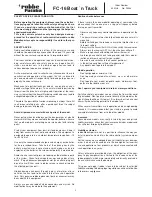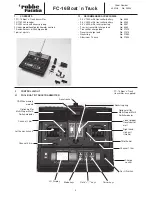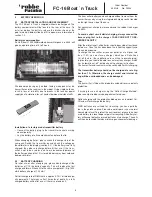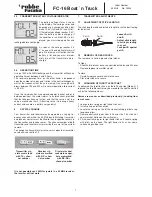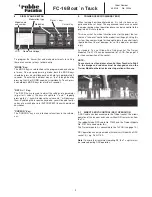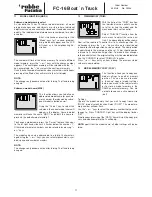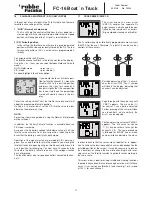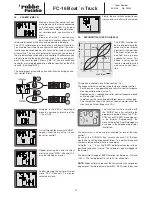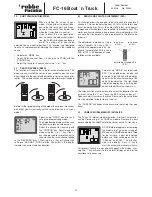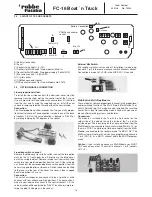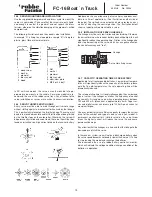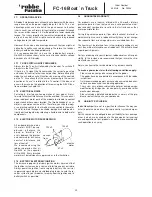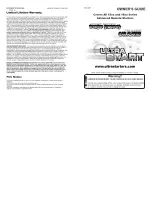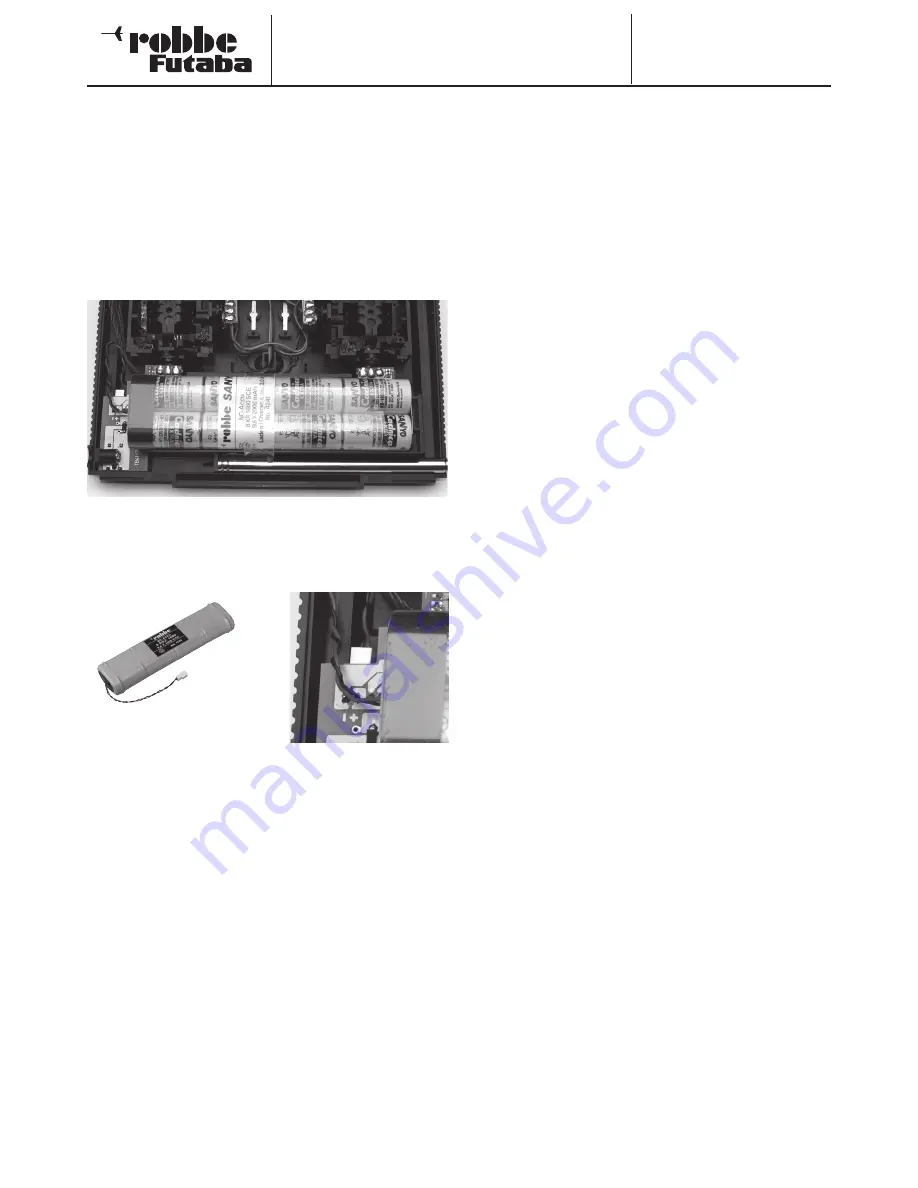
Order Number
40 MHz No. F4044
FC-16 Boat `n Truck
6
5.
BATTERY OPERATION
5.1 BATTERY INSTALLATION AND REPLACEMENT
The FC-16 Boat ‘n Truck is supplied without a battery pack. The
battery compartment will be found in the rear of the case. To
install or replace the battery, release the latches shown at the
point marked X below, slide and lift to open, more information in
section 7.2.
Battery recommendation:
9.6 Volt (8cell) 1500 NiMH welded transmitter pack, no. 4566, will
give an operating time of 8 to 9 hours.
We recommend using only welded, factory made packs for the
transmitter and the receiver in the model. Using single cells can
result in loss of reliability due to breaks in the receiver power
supply due to vibration/ loss of contact between individual cells.
Installation of a factory made transmitter battery
• Connect the battery plug to the transmitter socket ensuring
correct polarity
• Lay the battery into its compartment and close the lid.
When changing batteries, please check the charge state of the
new pack. Switch the transmitter on and check the voltage on
the voltmeter in the display (section 5.3). If the battery is not fully
charged, then please recharge before further use. If the trans-
mitter is not to be used for a while, we recommend removal of
the battery pack and that it is stored indoors away from cold and
damp over winter.
5.2 BATTERY CHARGING
On initial use, or after a long lay up, please trickle charge all the
batteries at 1/10 the battery capacity. This will replace the lost
charge and form all the cells to the same charge level. (E.g. 1500
mAh battery, charge at 150 mA)
Self-discharge rate of NiMH cells is approx 5-10% of rated capa-
city per month. That means after 10 months of inactivity, a fully
charged battery will be flat, even if there is no load on it.
The transmitter battery can be charged without removal from the
transmitter case by using the integrated charging socket located
on the right hand side of the case.
For convenient charging, we recommend the robbe Unicharger
no.8500.
To avoid a short circuit whilst charging, always connect the
banana plug first to the charger. TAKE CARE NOT TO RE-
VERSE POLARITY.
After the winter lay off, all batteries should be cycled at least once
before use. Once this has been done, the full battery capacity and
life can be expected.
To charge the transmitter or receiver batteries at a higher rate
than 1/10 C, you must use a charger, which has a Delta-Peak
Cut-off feature, (these batteries are sensitive to overcharging).
In principle, you should be able to use almost any charger, which
has “automatic cut-off”, but do check the charger instructions.
The transmitter and receiver must be switched off whilst charging.
The transmitter battery should not be charged at a rate hig-
her than 1 A. Otherwise, the charge socket and internal wi-
ring will be overloaded and can be damaged.
Tip:
The transmitter is fitted with a diode for accidental reverse polarity
protection.
If wishing to use a charger using the “Reflex Charge Method”,
please contact robbe service department for advice.
Reflex charging with the protection diode gives an incorrect Cut-
Off and will overcharge the battery.
NiMH batteries are suitable for re-cycling; you have paid the
fee in the purchase price. Please do not dispose in your normal
household refuse! To protect the environment, please take your
used battery to a local disposal point for recycling. All battery sel-
lers will accept defective or used batteries at no charge. The cells
will then be recycled thereby minimising environmental damage.



